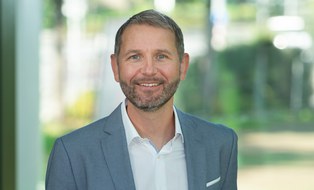plusROOF
| Project Title | greenLEAF |
| Project Subtitle | Development of a bonding technology for the accelerated production of a steel-glass roof system with maximum transparency |
| Project Leader | Prof. Dr.-Ing. Bernhard Weller (TU Dresden) |
| Researcher | Dr.-Ing. Felix Nicklisch (TU Dresden) |
| Partners | Metallbau Windeck GmbH |
| Fundings | BMWi – Zentrales Innovationsprogramm Mittelstand (ZIM) |
| Time Span | 2021-2023 |
Project Description
Steel-glass-roofs face a growing interest for new and existing buildings. Individual demands of building owners and the unique character of many buildings lead to high planning and production efforts for every single project. This is contrary to the goal to industrialise production processes in construction. A high efficiency in planning and production can be achieved through parametric design strategies for steel-glass-constructions. Therefore the „Metallbau Windeck GmbH“ has developed the ROOF-system. Complex double-curved support structures can be visualised, analysed, planned and modified via simple parameter inputs. However, the related assembly process for the glazing is still not very efficient.
This is where the plusROOF project comes in by developing a new manufacturing process for innovative roof constructions made of steel and glass through system-independent bonding. The algorithm-supported design and production process of the roof system allows a high individualisation, but keeps material use and costs on low level. The new bonding method enables high flexibility and multiple combination possibilities of the glazing system (thermal and solar control glazing, as well as switchable and intelligent glazing from various manufactures), which were previously not possible with the conventional clamping technology.
A major goal is the development of a specific application device with a dosing unit allowing semi-automated installation of the glazing. The control uses the geometric data of the glued joint from the digital 3D model via an interface to guarantee reproducible adhesive application. The movement speed of the application device is recorded via a sensor and the discharge speed is controlled in such a way, that dosing errors can be excluded. A further innovative step is the direct bonding to the anti-corrosion coating of the steel support structure. Here, advantages result from the elimination of work steps.
Contact persons TU Dresden
 © Franziska Rehde
© Franziska Rehde
Research Associate
NameDr.-Ing. Felix Nicklisch
Group Leader Adhesive Bonding & Laminates
Send encrypted email via the SecureMail portal (for TUD external users only).
Institute of Building Construction
Institute of Building Construction
Visiting address:
NÜR, Room 06-022 Nürnberger Straße 31A
01187 Dresden
 © Franziska Rehde
© Franziska Rehde
Prof. Dr.-Ing. Bernhard Weller
Send encrypted email via the SecureMail portal (for TUD external users only).
Institute of Building Construction
Institute of Building Construction
Visiting address:
NÜR, Raum 06-017 Nürnberger Straße 31A
01187 Dresden
